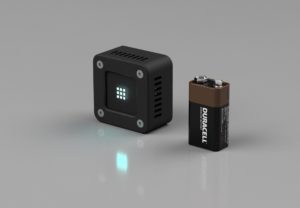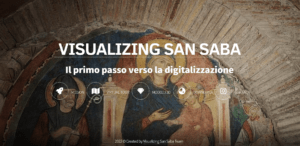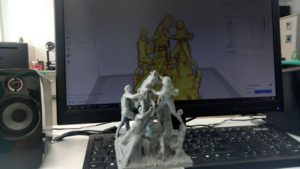3D printing, multi-spectral lighting, virtual reality, innovative software and open source systems to preserve and promote new approaches to cultural heritage
Preserving, promoting and proposing a new interpretation of Italian and international cultural heritage
Italy has a unique cultural and artistic heritage. Dante, in his most famous work “The Divine Comedy”, referred to Italy as “Bel Paese”, and despite 800 years have passed, the title given by the supreme poet became in common use and it’s still used today worldwide to refer to italian peninsula.
About 70% of the world cultural heritage is located in Italy, with 59 sites recognized by UNESCO, distributed in large cities as well as in smaller and hidden villages, in addition to more than 4.000 museums, 6.000 archaeological areas, 85.000 churches and 40.000 historic residences.
We are talking about an invaluable wealth that must be protected and valued. At Maker Faire Rome 2022 were presented many projects that, through the most modern technologies, such as 3D printing, multi-spectral lighting, virtual reality, innovative software and open source systems, aim to preserve, promote and propose a new interpretation of Italian and international cultural heritage.
Relio “R”: open-source multispectral illumination device
Relio “R” is the first multi-spectral lighting platform, developed in open-source technology and based on Arduino, made for science and art, with the aim to help the research institutes during restorations and digital imaging activities.
It allows to illuminate with white, colored, ultraviolet and infrared light the works of art to reveal defects, secrets and details invisible to the naked eye.
During Maker Faire Rome 2022, the startup Relio Labs showed how the use of “maker” technologies and “open” development philosophies based on 3D printing, firmware sharing and interfacing APIs, allowed a small Italian company to work for prestigious scientific and cultural institutions worldwide.
With this project Relio Labs intends to promote the use of open-source in ultra-professional contexts, because it firmly believes that the knowledge brings new knowledge and that the sharing is the main engine of technological growth.
 Innovative technologies and treatments to support cultural heritage
Innovative technologies and treatments to support cultural heritage
The idea presented at Maker Faire Rome 2022 concerns the development of more sustainable and alternative physical techniques and processes for the recovery and the study of degraded cultural heritage.
For the first time in Italy will be used ionizing radiation, available at ENEA – National Agency for New Technologies, Energy and Sustainable Economic Development – for cure treatments and as non-invasive diagnostic tools of artistic and cultural heritage.
In addition, will be carried out treatments with hydrogel, with and without photo-initiator, to clean the paper. These treatments use non-toxic and sustainable substances that eliminate oxidation products due to cellulose aging.
The project was created by Ilaria Di Sarcina, researcher at the Calliope range irradiation facility (C.R. ENEA Casaccia, Rome), and Alessia Cemmi, Head of the FSN-FISS-SNI Laboratory and the Calliope range irradiation facility (C.R. ENEA Casaccia, Rome).
Visualizing San Saba: geotechnologies applied to cultural heritage
At Maker Faire Rome 2022 was presented the website created by participants in the Summer School of 7 days, organized at the Department of Humanities Studies Roma Tre. These students, through a bottom-up strategy, have learned to use high-tech instrumentation.
Laser scanners, GPS, 360 degree cameras, thermal cameras and specialized software in the cloud environment were used to create, with expert consultants in the field of Digital Cultural Heritage, dissemination and communication products and services for mobile and desktop platforms, related to the promotion of the church of San Saba on Aventino hill.
 The Hatrix: Heritage Augmented through research, immersion, community and sustainability
The Hatrix: Heritage Augmented through research, immersion, community and sustainability
The Hatrix is a container of ideas, methodologies, prototypes and digital applications that uses tools and potentials offered by technology and communication systems, to recover, enhance and disseminate the historical, artistic, archaeological, anthropological and environmental heritage.
3D printing, VR, body capture tools for gamification and tourism and practical workshops are just some of the project highlights.
The Hatrix was carried out by the Archeo&Arte 3D Lab working group, composed of cultural professionals who, under the coordination of the Director of the Digilab Research Centre, intend to formulate a new approach to the world of heritage.
The implementation of the SoPHIA model as a Heritage Making process
With the aim to identify a holistic model for assessing the impact of interventions on cultural heritage with a view to sustainability, the SoPHIA project focuses on the fundamental dimensions to be taken into account in the evaluation exercise.
Among these, the areas of impact realization, necessarily transversal to the economic, social, environmental and cultural domains; people, intended as stakeholders directly involved or indirectly impacted by the intervention in analysis; the time, that’s the necessity that the impact assessment is started in the phase of ideation of the cultural intervention.
The project was carried out by Paola Demartini, Full Professor of Business Administration at the University of Roma Tre.
HeRO – Herbarium RO Online
HeRo is a project that aims to enhance the heritage of the Herbarium Museum of Sapienza University of Rome through the progressive digitalization, cataloging and virtual exhibition of the museum collections, to make them available to a wide audience, for the dissemination and the research both nationally and internationally.
The dry plants preserved in the herbariums, flattened on sheets of standard size and ordered with taxonomic classification criteria, lend themselves perfectly to the acquisition of images and the digital security of biological information.
A project realized by Caterina Giovinazzo, PhD Curator of the biological area museums, Head of the laboratory “Officine Museali” of the Sapienza Museum Centre (PmS).
Maker Faire Rome – The European Edition has been committed since its very first edition to make innovation accessible, usable and profitable for all. This blog is always updated and full of opportunities and inspiration for makers, makers, SMEs and all the curious ones who wish to enrich their knowledge and expand their business, in Italy, in Europe and beyond.
Subscribe our newsletter: we will select and share the most valuable information for you



















































































